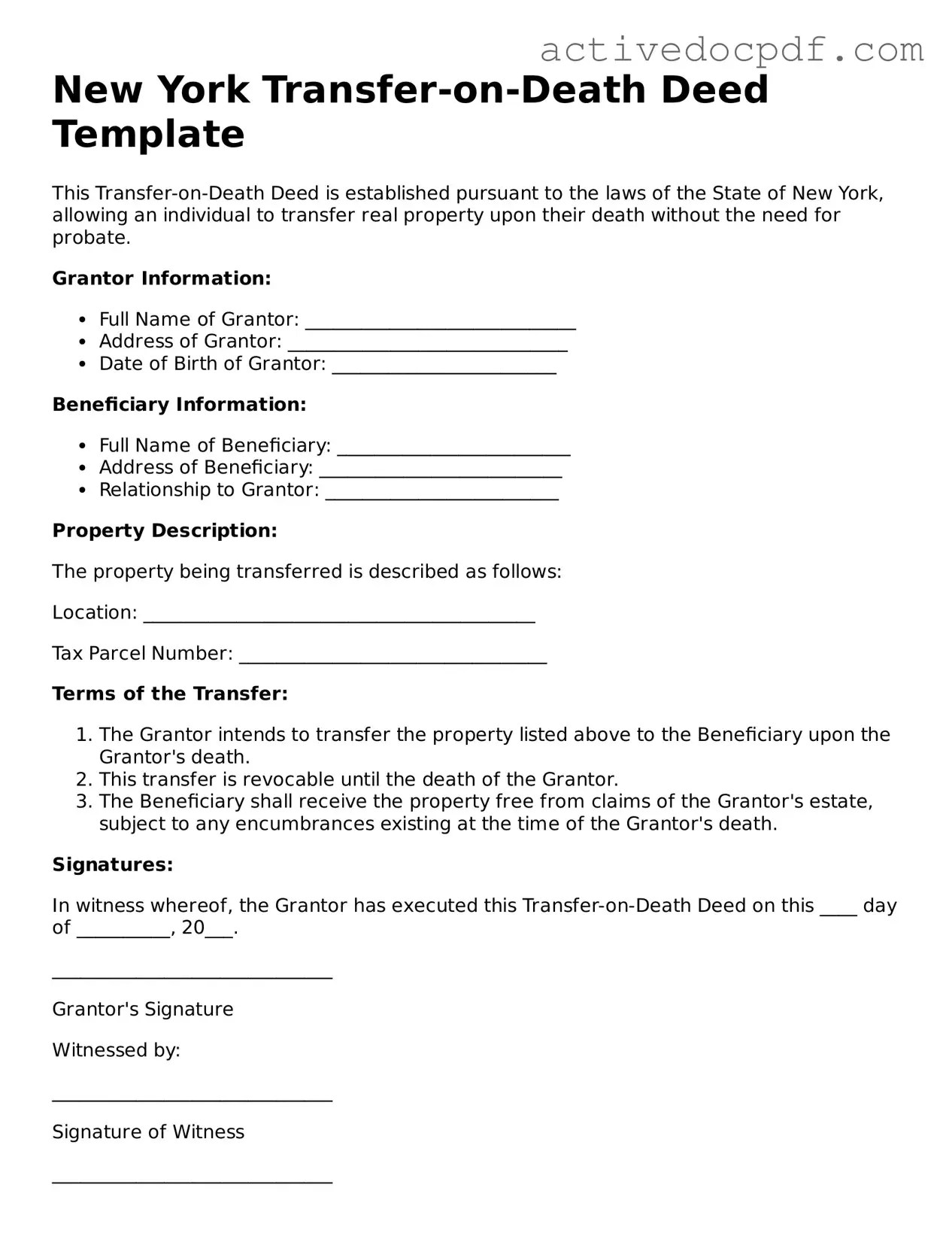What is a Transfer-on-Death Deed?
A Transfer-on-Death Deed (TOD Deed) is a legal document that allows an individual to transfer real property to a beneficiary upon their death. This type of deed bypasses the probate process, enabling a smoother and often quicker transfer of property ownership.
Who can use a Transfer-on-Death Deed in New York?
Any property owner in New York can use a Transfer-on-Death Deed. This includes individuals who own real estate solely or as joint tenants. However, it is important to ensure that the deed is executed properly according to state laws to be effective.
How do I create a Transfer-on-Death Deed?
To create a Transfer-on-Death Deed, follow these steps:
-
Obtain the appropriate form for a Transfer-on-Death Deed.
-
Fill out the form with the required information, including the property details and beneficiary's name.
-
Sign the deed in the presence of a notary public.
-
Record the deed with the county clerk's office where the property is located.
The following information is typically required:
-
The name and address of the property owner(s).
-
The legal description of the property.
-
The name and address of the beneficiary.
-
The signature of the property owner(s) and a notary public.
Can I change or revoke a Transfer-on-Death Deed?
Yes, a Transfer-on-Death Deed can be revoked or changed at any time before the property owner’s death. This can be done by executing a new deed that explicitly revokes the previous one or by recording a revocation document with the county clerk.
What happens if the beneficiary predeceases the property owner?
If the named beneficiary dies before the property owner, the Transfer-on-Death Deed will become ineffective. It is advisable to name alternate beneficiaries to avoid complications in such situations.
Are there any tax implications with a Transfer-on-Death Deed?
Generally, a Transfer-on-Death Deed does not trigger immediate tax consequences. However, the property may be subject to estate taxes upon the owner's death. Consulting with a tax professional is recommended to understand the specific implications.
Is legal advice necessary to use a Transfer-on-Death Deed?
While it is not legally required to seek legal advice, it is often beneficial. An attorney can help ensure that the deed is completed correctly and that it aligns with the property owner’s overall estate planning goals.
The Transfer-on-Death Deed form can typically be found on the New York State government website or through local county clerk offices. It is important to use the most current version of the form to ensure compliance with state laws.
